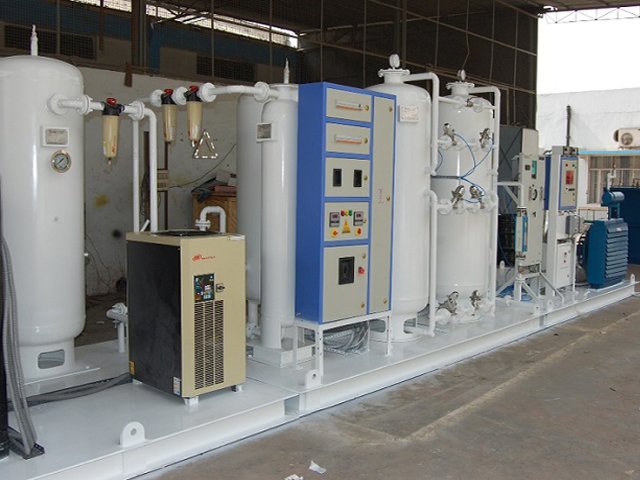- A-29, Industrial Area, Site IV,
Sahibabad, Ghaziabad, UP, India. - (+91-120) 2896063
info@bhartiyagroups.com


We will outline what PSA oxygen plants are and why they are important as India fights a big rise in Covid cases and a resulting oxygen shortage that has crippled its healthcare response.
More than a year after the pandemic began, India's administration announced on April 25 that 551 Pressure Swing Adsorption (PSA) Medical Oxygen Generation Plants would be installed in health care facilities across the country. This is on top of the 162 plants that were officially planned and for which Rs 201.58 crore was reserved.
The problem has grown controversial, with the state and federal government disputing about who was to blame for the facilities' construction. Given the alarming surge in Covid-19 cases across the country, which has led to a significant scarcity of medical oxygen, the topic has occupied a central place.
As a result of the high demand, hospitals have issued Emergency calls for extra oxygen, asking the courts to interfere, and there have been many instances of supply disruption resulting in patients in the hospital dying while receiving treatment.
As a result, we will explore what PSA plants are, how much they cost, and why they're a play in India's Covid-19 struggle.
The technological innovations
The affection of a solvent for a permanent surface is called as adsorption. It is easy to identify the individual parts of a compressed gasses (such as air) using the differential inclinations of the separate sections. A PSA oxygen plant works on essentially the very same principle.
The capability of such a generated oxygen plant. It uses a method that absorbs nitrogen from the air to compress oxygen for supply to hospitals or businesses, depending on the situation. The oxygen supplied can be sent back to the point of application through a dedicated pipe or condensed to fill tanks.
The oxygen concentration in medical grade oxygen ranges from 90.0 to 96 percent. The rest is mostly made up of argon and nitrogen.
They work at approaching conditions and retain oxygen at elevated heat using adsorbents such as adsorbent, carbon black, and adsorbents. While the oxygen produced by all these plants is said to be less pure than oxygen liquid plant derived from freezing equipment, the question in the nation right here is whether these plants may well have helped ease the country's long term medical oxygen shortage.
The expense
PSA oxygen plants have an initial batch cost that is defined by the plant's capacity. However, hospital operators who have adopted these units argue that the savings in annual oxygen bills surpasses this.
Last year, the National Medical Services Association (CMSS), an administrative agency under the Ministry of Health & Family Welfare, called for tenders for 150 oxygen plants with capacities ranging from 100 to 3,200 litres per minute (LPM). So yet, just 33 have been built.
The 150 plants might have created 80,500 litres per minute when aggregated. The cost of creating a factory which can supply 24 cylinders of gas per day is around Rs 33 lakh, and this can be done in the next few weeks.
550 LPM oxygen would've been required for a 240-bed hospital. A hospital of that magnitude, say with 40 ICU beds, would normally use roughly Rs 5 lakh in oxygen every month.
However, Covid-19 has led to a significant increase in oxygen consumption. According to industry professionals, a PSA plant costing approximately Rs 50 lakh would indeed be sufficient for such a hospital. In terms of total oxygen expense reduction, the institution would have recuperated its cost in 18 months.
PSA Plant Advantages
The program uses two clear advantages. The first is that the institution gains a controlled plant that really can manufacture all of the oxygen it wants, reducing the need for cylinders and other machinery. India's issue, according to the home ministry, is not oxygen supply but oxygen transfer.
Handling cylinders is extremely risky since oxygen at elevated heat is extremely explosive. Several fires in Covid-19 community hospitals have served as sharp warnings of such hazards in recent years. During periods of increased demand, the facility could also serve as a buffer. This is a limited technology.
However, the fact that PSA is a "clean technology" also works well enough for hospitals. The air temperature will be used as the raw material. It also takes up minimal space; a PSA oxygen plant's maximum area is roughly 7 ft/9ft/7ft. A plant may be fully operational in a couple of weeks, but there are at least 25 vendors in the country that can offer between 2 and 20 plants per month.
psa oxygen concentrator, psa oxygen plant capacity, Covid-19, oxygen liquid tank, PSA Plant Advantages







